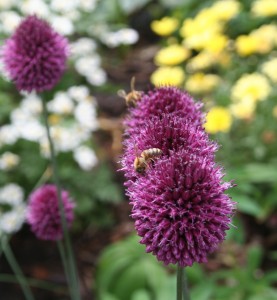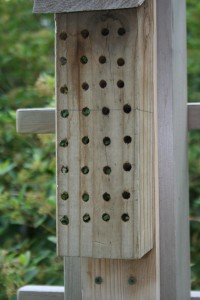Pollinator Friendly Gardens, Part 1
 Tuesday’s Protect the Pollinators symposium at the Minnesota Landscape Arboretum included four great speakers on butterflies, bees, other pollinators, the threats they face and what gardeners can do about them. One over-riding message of the symposium was that while there are definite threats to pollinators, which are vital to food production, there is hope, and home gardeners can have a huge, positive impact on pollinators.
Tuesday’s Protect the Pollinators symposium at the Minnesota Landscape Arboretum included four great speakers on butterflies, bees, other pollinators, the threats they face and what gardeners can do about them. One over-riding message of the symposium was that while there are definite threats to pollinators, which are vital to food production, there is hope, and home gardeners can have a huge, positive impact on pollinators.
Horticulturist Julia Bohnen offered concrete suggestions for home gardeners. We’re going to devote three blog posts to this important topic. Today’s post will cover the garden features that support pollinators. On Saturday, we’ll talk about garden practices and Monday’s post will cover the best plants for pollinators.
It’s easy to create pollinator friendly gardens. Many of the features that pollinators like, humans like, too. Here are seven garden features Julie recommends to encourage pollinators.
1) A diverse landscape. Some pollinators require specific plants or specific types of flowers, so plant lots of different kinds of shrubs, trees and perennials with a variety of flower forms (tubular, flat-topped, etc.) to bring in a variety of pollinators and to improve the overall resilience of your landscape.

2) Shelter and basking spots. Some pollinators overwinter in the North. So, don’t be too quick to clean up your garden. Create microclimates that are warm for butterflies to enjoy.
3) Water features. Bees and butterflies need water, too! Birdbaths, shallow spots on the ground where water may collect, plants with crevices where water can pool are all great drinking fountains for pollinators. Here’s a great idea for a pollinator drinking spot we saw recently.
4) Bare spots and mud spots. Many bees nest in the ground and they need to find spots to do that so don’t be too quick to cover every inch of your landscape in mulch.
5) Natural mulches. Those areas you do mulch are best covered with natural materials — leaf mulch, bark, shredded wood. These also provide protection and nesting spots.
6) A little mess. A brush pile may look messy to some, but to pollinators it looks like home.
7) A bee house. You can make a bee house for orchard mason bees and other native bees, but the houses should be cleaned out each year. Another idea is to fill a structure with hollow sticks, which can be replaced each year. They are available for sale or you could collect sticks from your property. The optimum size is 5 to 7 inches long with a 1/4 inch diameter hole.
There are lots of books out now on pollinator friendly gardens. This one from the Xerces Society is readable and thorough.
Tomorrow: Best practices for pollinator friendly gardens.

2 Comments
-
Pingback: Member Spoltlight: New Gardeners - Minnesota State Horticultural Society
-
Pingback: Food to Grow Garden Feeds Its Neighbors - Minnesota State Horticultural Society
Back to Blog